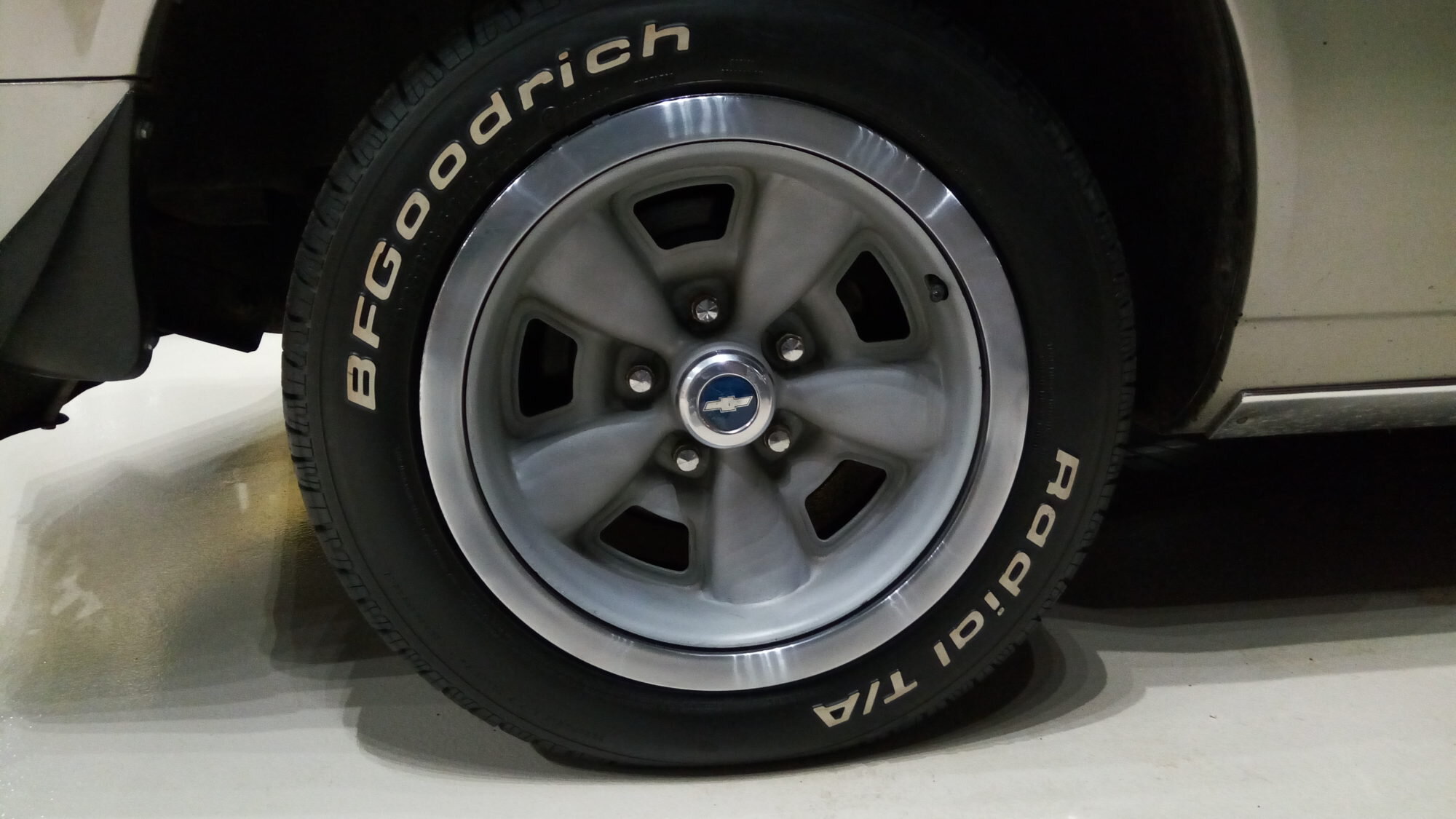1973 Chevrolet Camaro Z28
On loan from: Bruce Schanbacher, Kearney, NE
Notable: All original; unrestored; 39,000 miles
Original cost: $3,714.00 (In 1973: Average household income, $12,900.00; average home cost $32,500.00; gallon gas, 40 cents)
Number made: 11,574 with manual transmission; 5,467 with automatic transmission
Engine, etc.: Performance 350, OHV V-8; 245 hp; 4-speed automatic; 108 in. wheelbase; 3,689 lbs.
The Camaro was introduced in 1967 as a compact car in direct competition with the Ford Mustang. It was a pony car built on the same frame as the Pontiac Firebird. The word “Camaro” was claimed to be French slang for “friend” (though there is no such word in French) but in the pony-car world, it meant “Mustang killer”.
Four generations of Camaros were produced from 1967 through 2002 when production ended. A fifth generation began in 2010.
In 1970 the second generation of Camaro (1970 – 1981) had improvements in the body and suspension. The Z28 had a 5.7 liter 360 hp engine. Production of the Camaro ceased for 174 days in 1972 due to a strike at the assembly plant in Ohio. Low sales contributed to GM’s decision to drop the big block 396 cu. in. engine after 1972. New government safety and emission regulations led to detuned engines. Safety was improved but performance was seriously affected. The small block engine lasted through the entire second generation with power that ranged from 360 hp in the 1970 Z28 to 115 hp by the mid- and late-1970’s.
The 1973 Camaro’s highest producing engine was the 350 cu. in. V-8 with 245 hp, ten hp less than the previous year. They were the first Z28’s to offer air conditioning as an option. They had 4-barrel carburetors, dual exhausts, and used regular gasoline.
Sales of the Z28 package continued to decline and the option was discontinued in 1974. By 1975 the most powerful V-8 was 155 hp and Camaro wouldn’t see more than 200 hp again until the mid-80’s. The Z28 was brought back for the 1977 model year. It handled well but had only 170 hp.
The third generation (1982 – 1992) saw a four-cylinder engine offered, fuel injection in the V-6 and V-8 engines, and tuned port injection (TPI). By 1990 the Camaro 350 TPI engine had 245 hp, the most potent Camaro since 1973. The fourth generation lasted from 1993 – 2002.
The Camaro wasn’t produced again until 2010 when the fifth generation came out with a dual over-head cam V-6 with 323 hp. The new 6.2L Gen IV V-8 was rated at 426 hp in the SS models, rivaling output of the special-order COPO (central office production order) 427 engines from 1969. (COPO cars were cars dealers could order if they knew the right ordering numbers. It was a way to circumvent GM’s policies limiting engine sizes in smaller cars such as the Camaro. Often they were cars the general public couldn’t get or didn’t even know existed.)
In 2014, the Camaro Z/28 had the first factory-installed 427 cu. in. engine since the COPO models. It was rated at 505 hp and helped the Z/28 become Motor Trend’s 2014 Best Driver’s Car award – the first American-brand car to receive the award.
Sources: http://www.conceptcarz.com/vehicle/z12078/Chevrolet-Camaro.aspx
http://www.classiccardatabase.com/specs.php?series=9213&year=1973&model=34226







